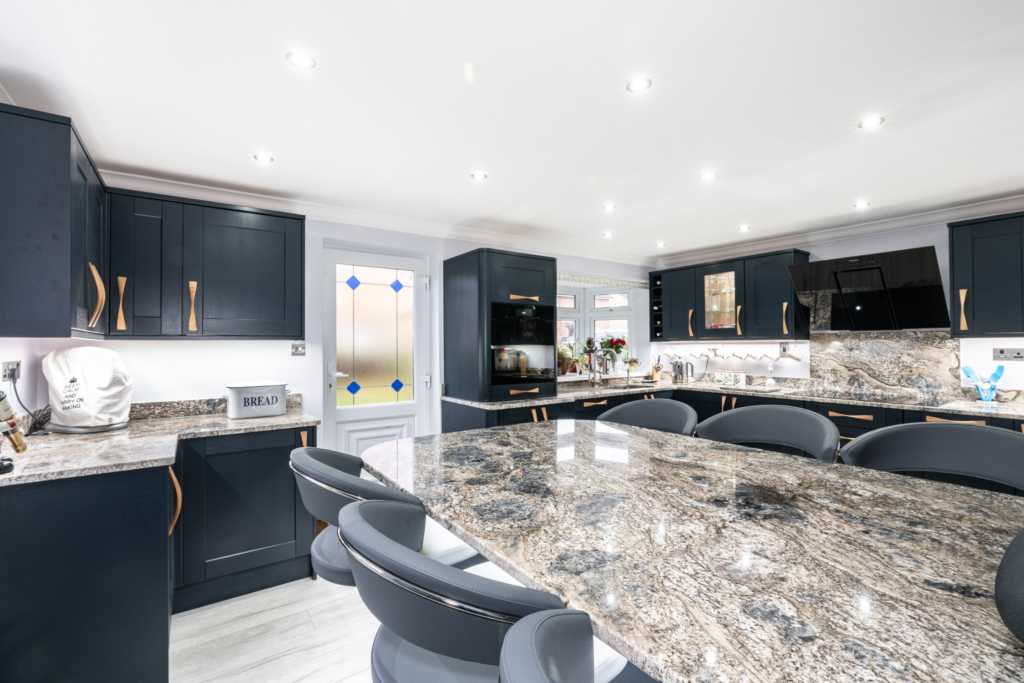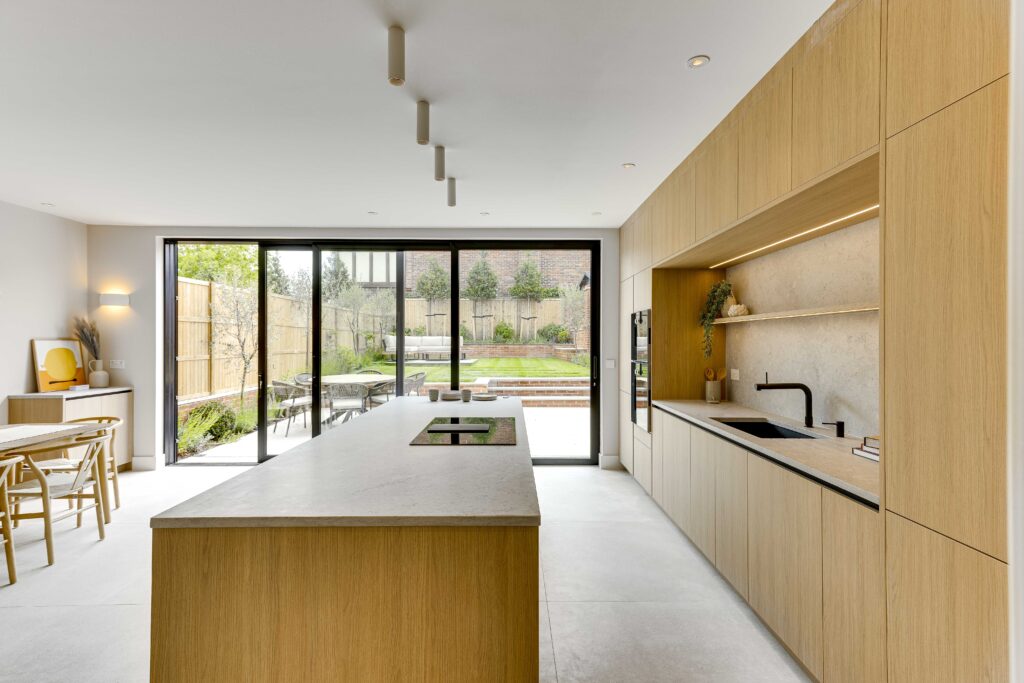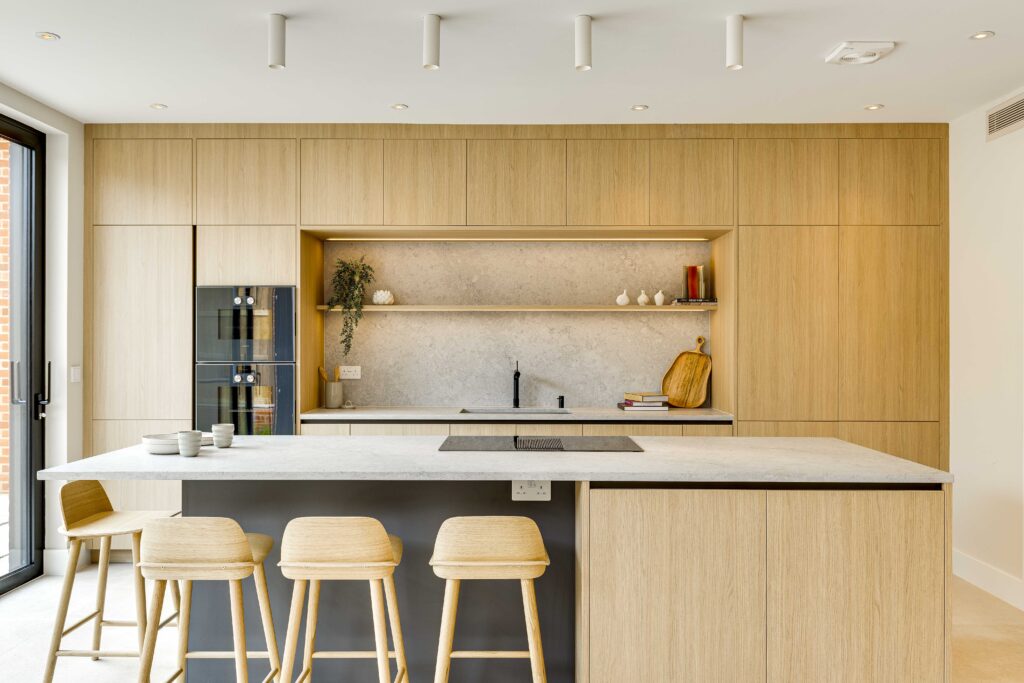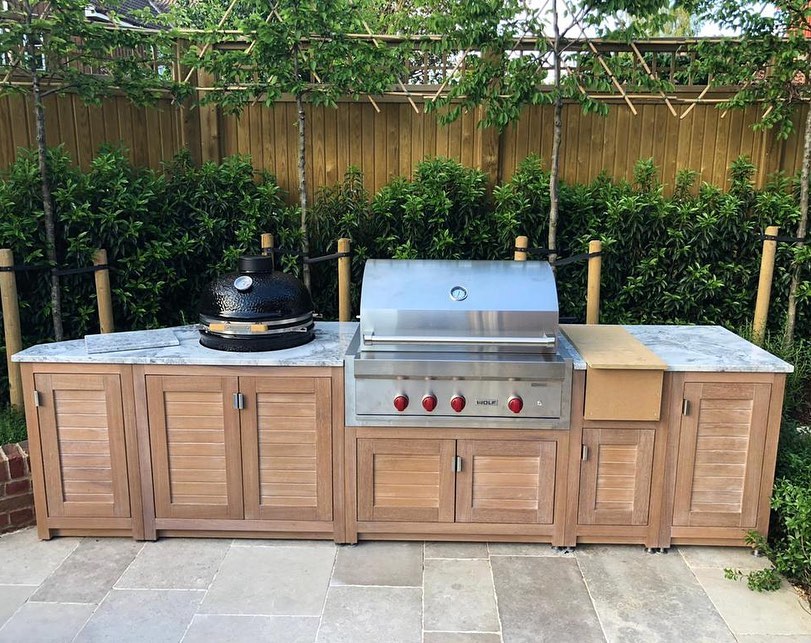The transitional kitchen design is ideal for many homeowners that want to keep their original architecture in their homes. It’s a design inspired by the comfort of a traditional style that is reimagined in the minimalistic aesthetics of our modern world. With a mixture of both contemporary and traditional elements, this growing style makes a bold statement that is both personal and timeless to the end user.
Think of symmetrical lines that frame a modern setting with an added classic opulence, the best of both worlds is shown throughout this interesting design. For many, it’s ideal as it allows the kitchen to remain in keeping with the original architecture of the home, but includes all the functionality needed for today’s modern living. You really can take advantage of your unique home!
Calacatta Gold seen in our Hertfordshire project
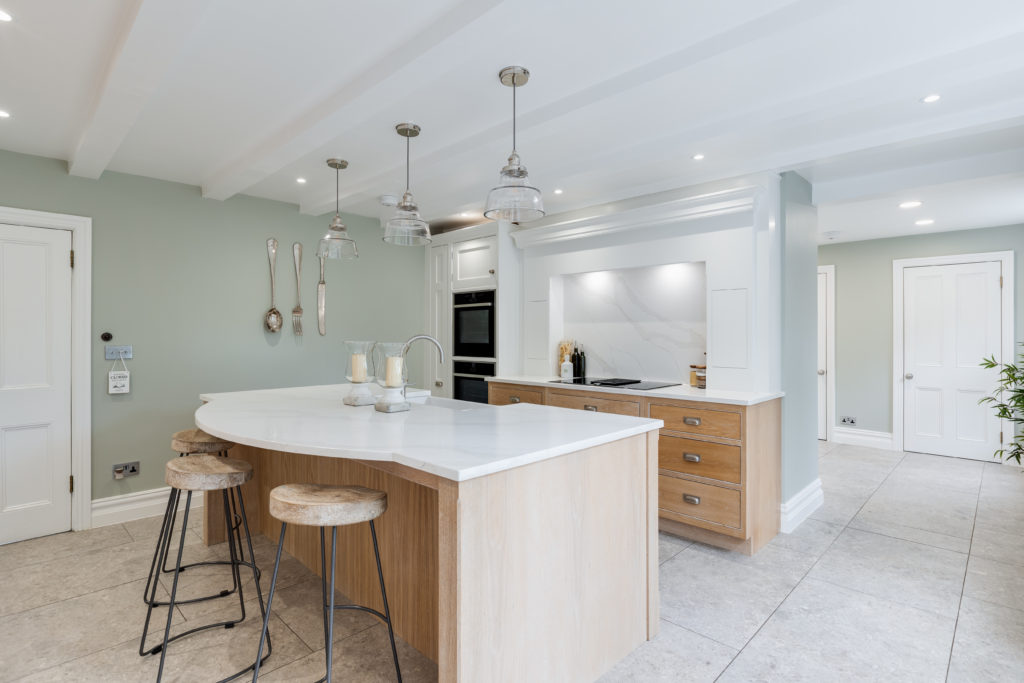
Kitchen credit 
Photography credit 
What are the features often seen in a transitional kitchen design?
A neutral colour palette
The transitional kitchen design often uses neutral colours, such as beige, grey or white for the base. These simple colour help create a calm and inviting space.
Shaker-style cabinets
Opting for shaker-style cabinetry is a staple in a transitional design. The simple and clean look works with both traditional and contemporary styles.
A mix of materials
Mixing the materials such as wood, stone and metal can add texture and interest.
Simple and sleek hardware
Using brushed nickel or stainless steel for the hardware can complement the clean lines of the shaker-style cabinets.
As much natural light as possible
Create a bright and airy space with large windows or skylights to let in the natural light.
Transitional lighting
Lighting is a key element in transitional kitchen design. Combining traditional and contemporary lighting fixtures, such as a chandelier and pendant lights, can add interest and create a cohesive look.
How does quartz work in a transitional design?
Quartz worktops offer the best of both worlds in terms of style and functionality. There is a wide range of colours and patterns, making them versatile enough to work with both traditional and contemporary styles. They can mimic the look of natural stone, such as granite and marble while offering a more uniform appearance. This engineered stone is very popular in today’s world.
The material is very durable and can withstand the wear and tear of daily use, making it a great option. It is also resistant to stains, scratches and heat which is important in a busy kitchen. They are also easy to clean and maintain, requiring only a mild soap and water solution.
You will find many clean lines on a quartz worktop which can complement the simple, sleek look of shaker-style cabinets commonly found in transitional kitchen designs.
You can mix quartz with other materials such as wood or metal to add interest and texture.
Caesarstone Buttermilk seen in our Letchworth project
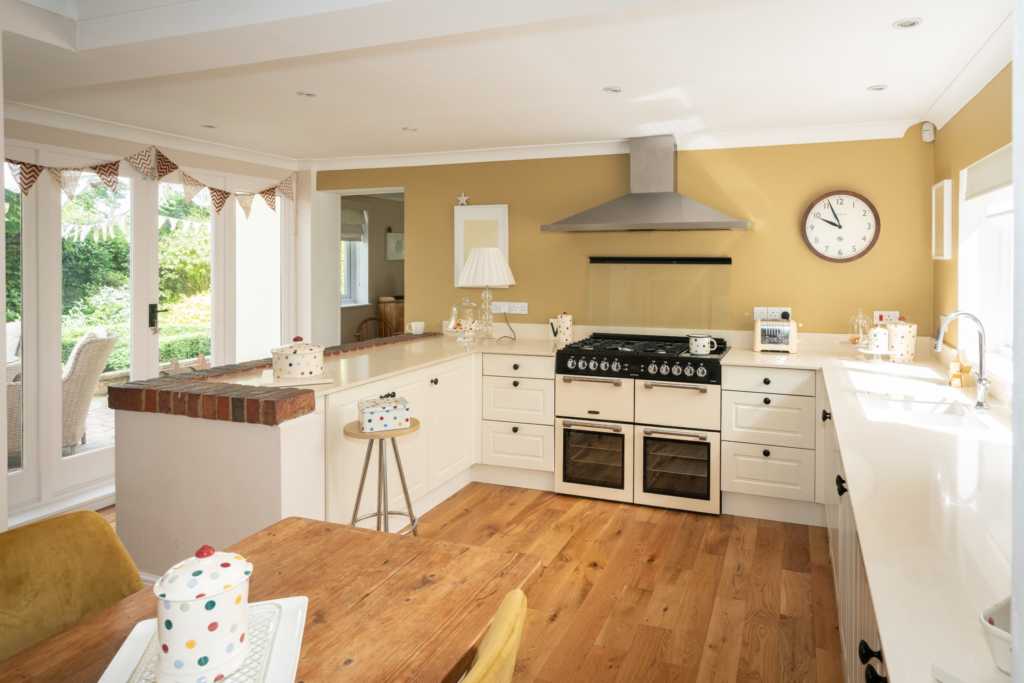
How does granite work in a transitional design?
Granite worktops offer a natural, timeless look that can complement both traditional and contemporary elements. There is a variety of colours and patterns, from subtle to bold that can add warmth and texture to the transitional design. Granite is also a durable material that can withstand the wear and tear of daily use and hot pots and pans, making it a great option for a functional kitchen.
Granite has always been a traditional element and a staple for many years, it can certainly bridge the gap between traditional and contemporary styles. This type of stone also reflects natural light and adds brightness to any room – it can help create a bright and airy space, which is often desired in transitional designs.
Black Fusion granite seen in our Letchworth project
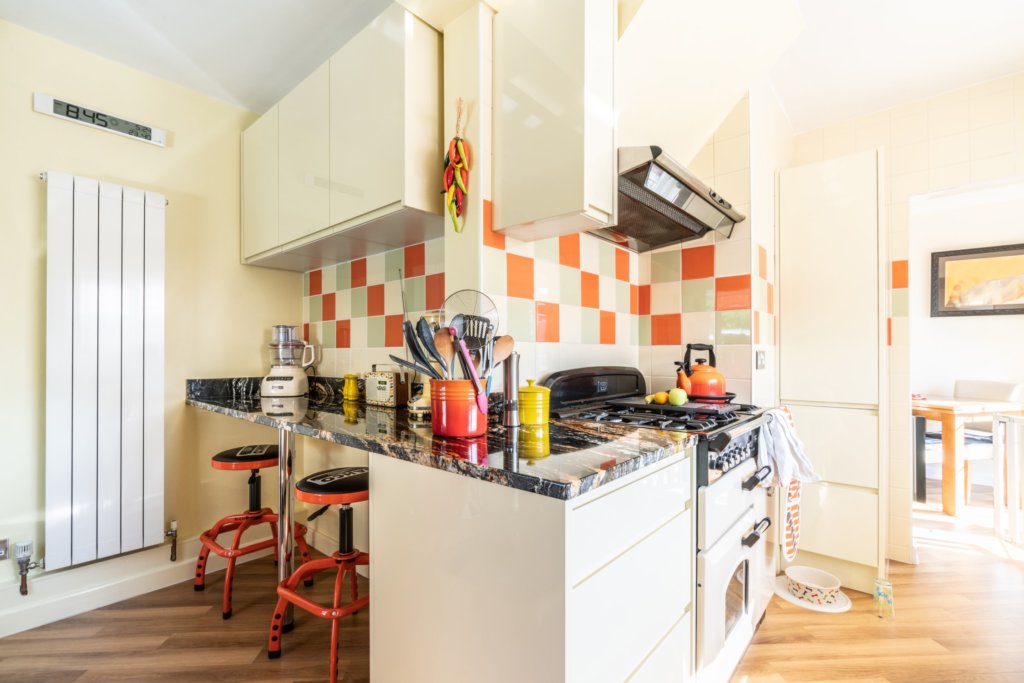
How does marble work in a transitional design?
Marble worktops offer a classic and elegant look that can complement both traditional and contemporary elements. There is a range of colours and patterns to choose from that match your personality, from subtle to bold. While marble is not as durable as granite and quartz, it can still withstand the wear and tear of daily use with proper maintenance – it is also heat resistant, which is important in a kitchen design.
Marble can be used as a statement piece, as a splashback or as an island countertop, adding a focal point to the space. Marble can also be used to create a contrast, for example, white marble can create a striking contrast against dark wood kitchen cabinets, adding visual interest to the space.
Cawdor Stone Gallery are a division of the Cawdor Group, one of the UK’s leading natural stone providers. With over 30 years of experience, our highly qualified team have undertaken international projects of all sizes, providing high-quality materials and a comprehensive range of stone-related services to a range of projects. Contact us today for more info on our quartz worktops, granite worktops and marble worktops.

